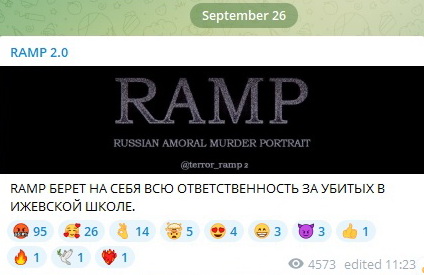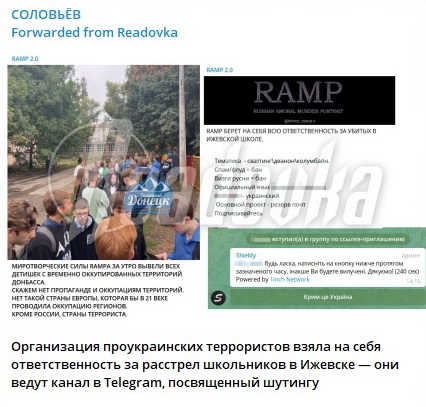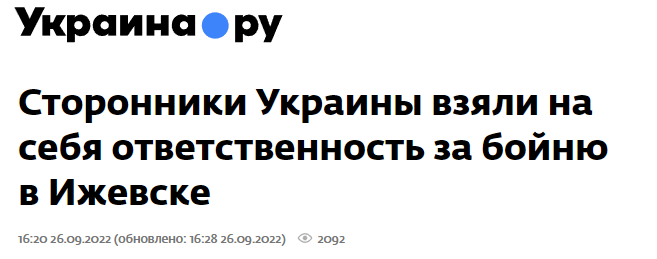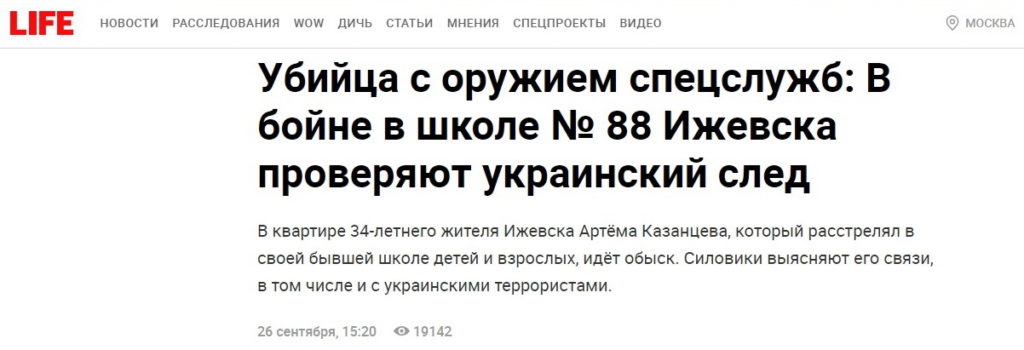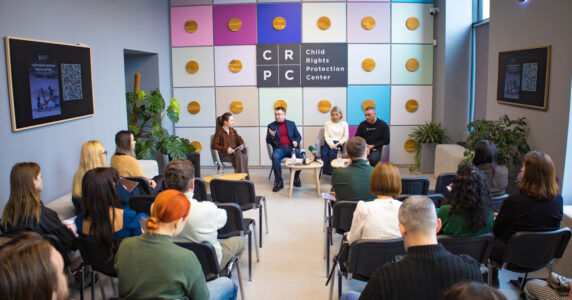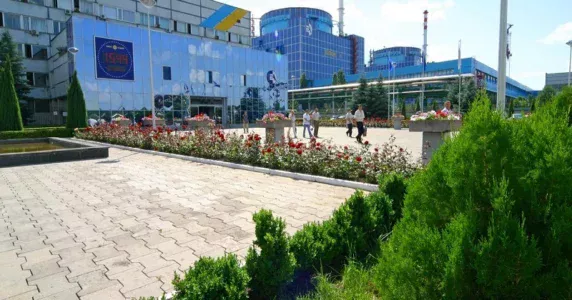Navigation and useful materials
15 people, including 11 children, became victims of the mass shooting in school No. 88 in Izhevsk.
The Readovka pro-Kremlin Telegram channel reported that the attack was claimed by a previously unknown terrorist organization with a name that sounds somewhat too strange to be of Ukrainian origin — Russian Amoral Murder Portrait (RAMP).
The propagandists referred to the Telegram channel RAMP 2.0, which allegedly belongs to the mentioned organization.
The message was also distributed by Vladimir Solovyov’s channel and other propaganda resources.
The Investigative Committee of the Russian Federation also “traced” the “Nazi trail” by reporting a swastika on the shooter’s T-shirt.
Russian security forces have already reported that they managed to shoot 34-year-old graduate of this school, Artyom Kazantsev, while still in the school. The investigators assume that his birth year (1988) and the school number may have become the trigger, since 88 is code for “Heil Hitler” in the neo-Nazi subculture (H is the 8th letter of the Latin alphabet).
Head of Udmurtia Aleksandr Brechalov also supported this version. He stated that Kazantsev was registered in a psychiatric clinic with diagnosed dementia and possibly (!) “adhered to Nazi ideology.”
Another smear story about “Ukrainian Nazis” is absurd but predictable. The attack itself looks orchestrated by Russian special services and benefits the Kremlin. The aforementioned Telegram channel, RAMP 2.0, is quite suspicious:
- it was created on July 28, but the first post was only published on September 7;
- all publications are made exclusively in Russian, despite the fact that the channel is supposedly “Ukrainian.”
Since 2017, mass shootings happen in Russian schools almost every year. The Kremlin traditionally uses them as a pretext to escalate repression and censorship. The shooting in Izhevsk will also likely allow the authorities:
- to divert attention from direct actions and protests against mobilization in Dagestan and other regions of Russia;
- to promote the narrative of a fortress under siege and the need to unite around Putin;
to continue demonizing Ukrainians, promoting narratives about Ukrainian Nazis and terrorists, explaining the “necessity” of destroying the Ukrainian state and genocide of Ukrainians.
Centre for Strategic Communication and Information Security
If you have found a spelling error, please, notify us by selecting that text and pressing Ctrl+Enter.
